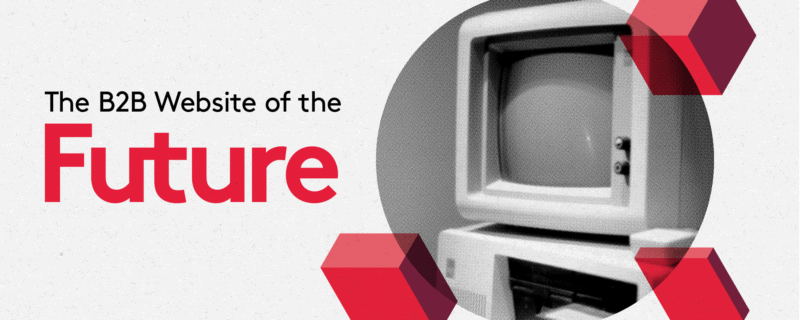
How to Reduce Friction on a B2B Website Is Key To Accelerating Revenue Growth
At the heart of every B2B purchase decision, buyers and customers need to consume content to inform their decision-making. But many brands make it unnecessarily difficult to find and consume content, by throwing roadblocks or dead ends throughout the journey.
Some of the most common examples of friction on today’s websites that slow down the customer journey include:
- Hard-gated content that forces web visitors to fill out extensive forms in exchange for access to content
- Content libraries that are disorganized and bury valuable pieces
- Content that isn’t on the website at all
- Dead-ends that don’t suggest a “next best asset” to read
This friction causes high-quality visitors to bounce off your website and doesn’t generate as many page views per session as you could with better website experience. In other words, it’s causing leads to bounce before they can enter your funnel.
“[B2B marketers need to realize that every time a] buyer cannot find the content they are looking for — that bounce represents a significant opportunity cost — because you may never get another chance to convert that prospect into a customer.”
– The Birth Of The B2B Consumer, Stephen Casey, Principal Analyst, Forrester
Buyers expect to discover the right B2B content at the right time. They are unwilling to spend time searching to find the content they need. Since information is widely available on the internet, your prospect is likely to bounce around until they find what they are looking for, perhaps from your competitors.
 “At VMware Carbon Black, we consider effective content delivery to be one of the most critical parts of our digital strategy, rather than an afterthought where we dump all assets into a single resource center. We want to connect visitors with relevant content quickly and easily give them a positive website experience where they get what they need to advance through their path to purchase.”
“At VMware Carbon Black, we consider effective content delivery to be one of the most critical parts of our digital strategy, rather than an afterthought where we dump all assets into a single resource center. We want to connect visitors with relevant content quickly and easily give them a positive website experience where they get what they need to advance through their path to purchase.”
B2B websites need to take a page from B2C’s playbook
How can today’s forward-thinking CMO meet the rising demands of their buyers and customers? Since platforms like Amazon are setting the standard for all buying experiences, it’s helpful to examine exactly how they create a best-in-class experience, so you can borrow their best tactics and apply them to B2B.
To get a better picture, let’s take a look at an example by Nick Edouard, Co-Founder, and CPO of PathFactory, of how B2C platforms use personalization to create superior experiences:
“There’s something familiar about logging into today’s leading consumer platforms. When I open up Netflix, I’m usually served a delightful array of British comedies. Don’t mind if I do! I’ll also see categories like Watch it Again, Recommended for You, and Popular on Netflix, making it easy for me to find something I’ll enjoy from an intimidatingly large content library.
Similarly, Spotify has Discover Weekly and Heavy Rotation. It knows I love David Bowie, 90s Britpop, and alternative 80s, and that my guilty pleasure is Electric Light Orchestra. (Shh don’t tell anyone!) My Amazon account has Top picks for You that offer me new swimming goggles and art supplies for my young daughter and son. The moment I arrive on these platforms, I can instantly see myself in the experience. My journey is evident, and where to go next is clear.”
Micro-personalize with the right set of data
This level of micro-personalization is an obvious differentiator for these platforms from their competitors. They’ve effectively created a “Nick” channel where he is served a curated set of recommendations. To be the best at what they do, these platforms have become intimately familiar with each user’s past content consumption, like which movies they’ve finished, if they’ve been listening to an artist regularly, and which products they’re researching and buying.
A robust data set, combined with sophisticated machine learning algorithms makes it possible to deliver fantastically accurate recommendations and delightfully efficient experience for the consumer. The whole experience is powered by having the right data—both content consumption data and content metadata—because an algorithm is only as good as the data it’s fed.
Summing up
The big takeaway here? These B2C platforms have set the gold standard for seamless customer experiences. B2B marketers who want to be ahead of the curve should start to think about how they can deliver similar, micro-personalized customer journeys on their websites in order to drive efficiencies and effectiveness in the demand waterfall and sales pipeline.
The Website of the Future Series reveals a vision for a B2B website that is an effective conversion, capable of driving more demand by delivering the right content to the right person at the right time. Check out the eBook for practical tips that will help you modernize your website to getting a leg up on your competitors.
